February 12th, 2023
The flight was pleasant and free of problems. On approach to Tokyo, the peak of Mount Fuji appeared above the cloud cover:
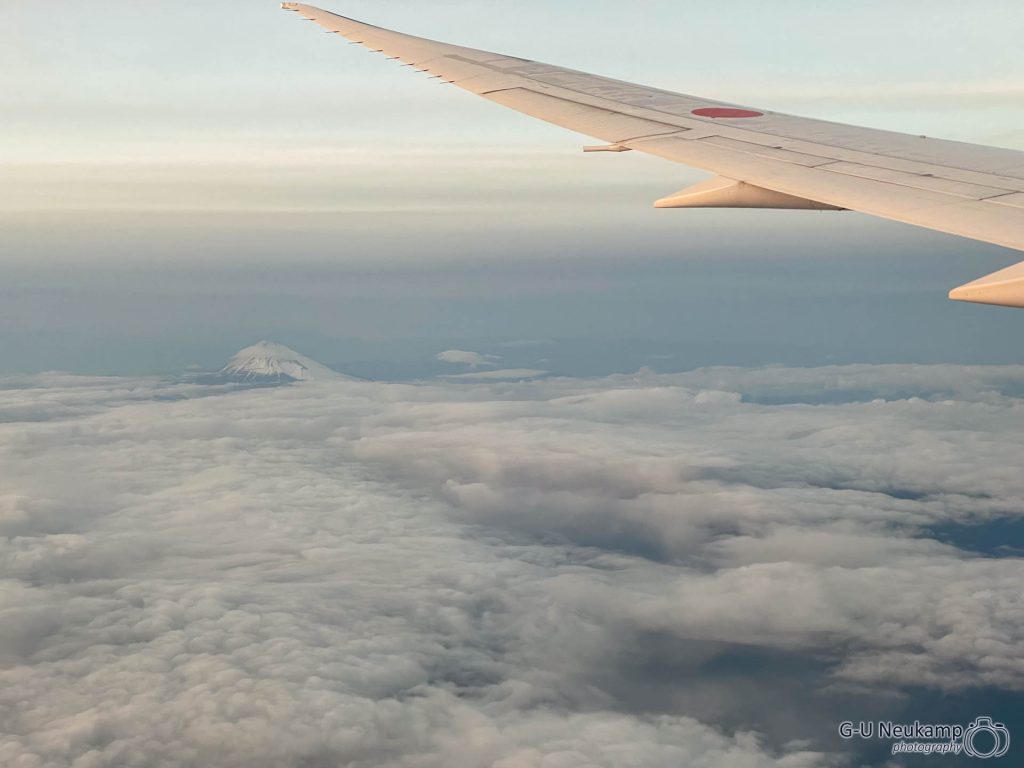
Around 10:00am CEST, so at 6: p.m. local time, we landed in Tokyo and after passing through the usual formalities (customs, Covid vaccination passport check) we were joyfully picked up by our daughter at 7: p.m. in the Haneda / Tokyo airport.
From the airport we took the metro to our hotel, the MIMARU Tokyo Asakusa Station. We had to change trains several times for this and were very grateful for the professional guidance and accompaniment by our daughter Luise. The subway network in Tokyo is very large. In addition to 13 subway lines, there are also numerous regional trains. The regional trains in Tokyo and the surrounding area are paid for with chip cards that can be charged in vending machines in the stations. Our daughter had already purchased two of these SUICA cards for us. You have to scan the cards each time you enter and leave the platform. According to the distance, the fare is then calculated and debited from the card balance.
The MIMARUs are so-called aparthotels, similar to the ACCOR ADAGIO chain. The rooms are equipped as mini-apartments with a small kitchen. Our apartment was designed for a maximum of 4 people (two single beds and a double bed) and very modern. In Kyōto we also rented a MIMARU apartment. We can highly recommend both.
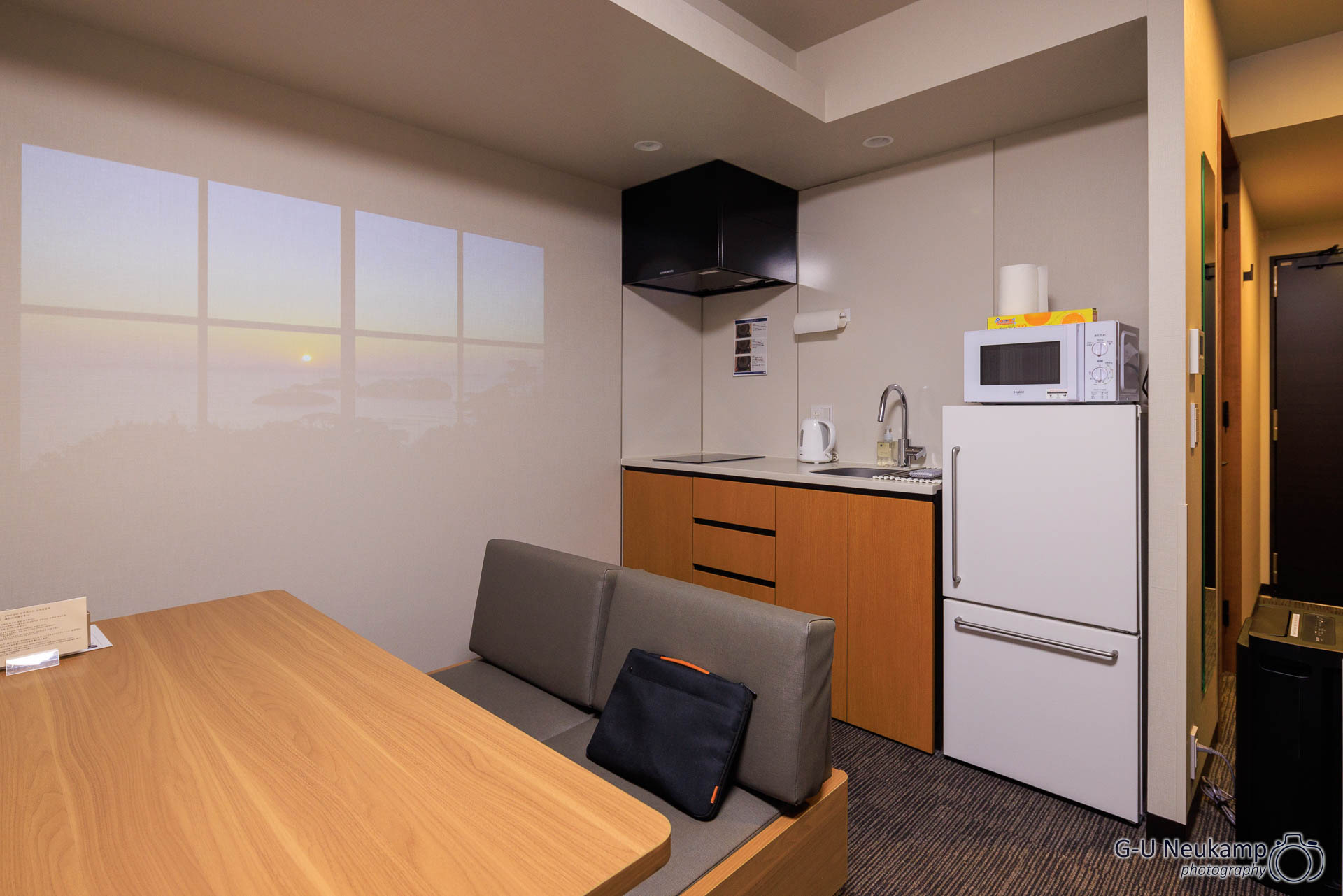
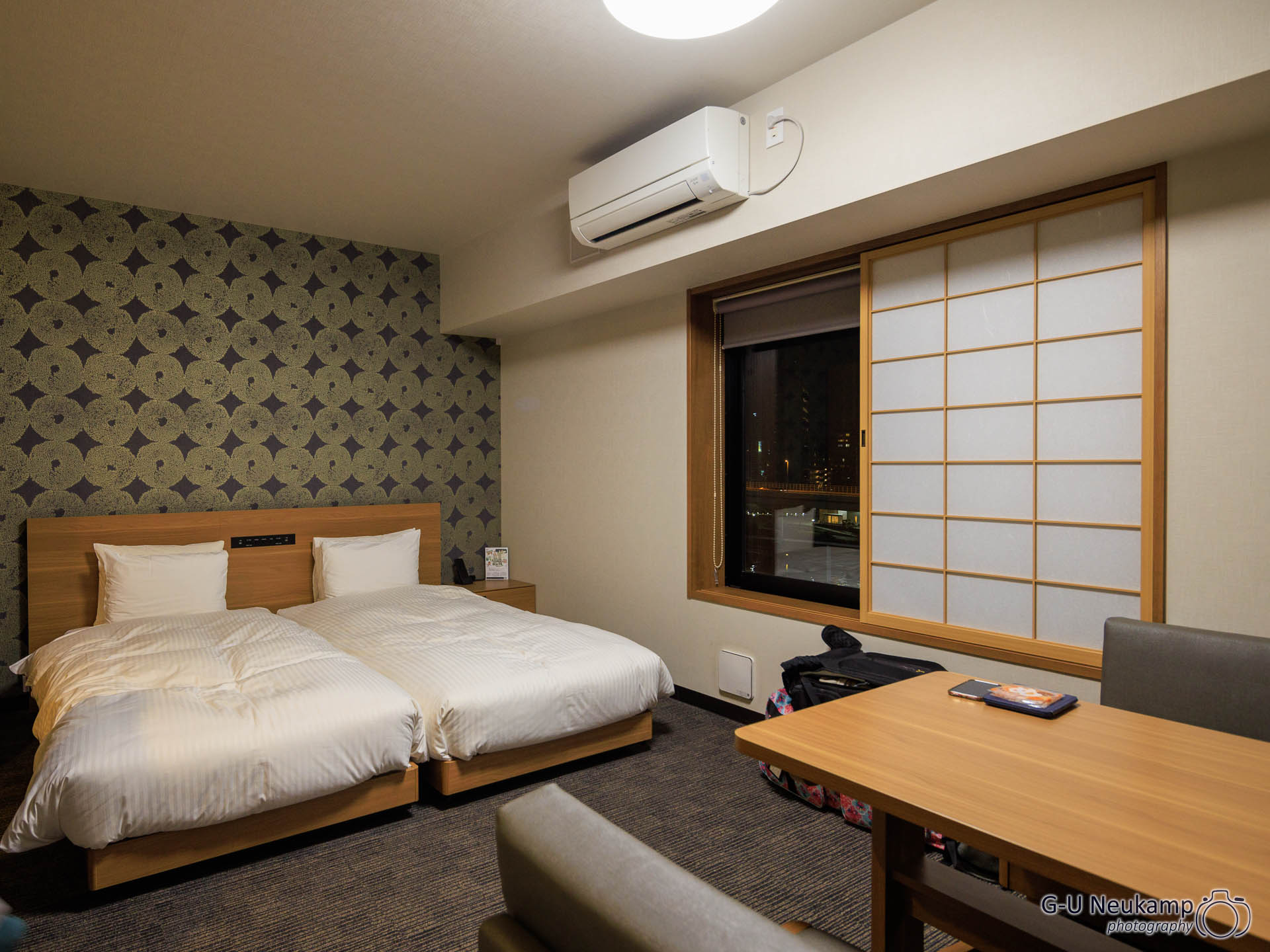
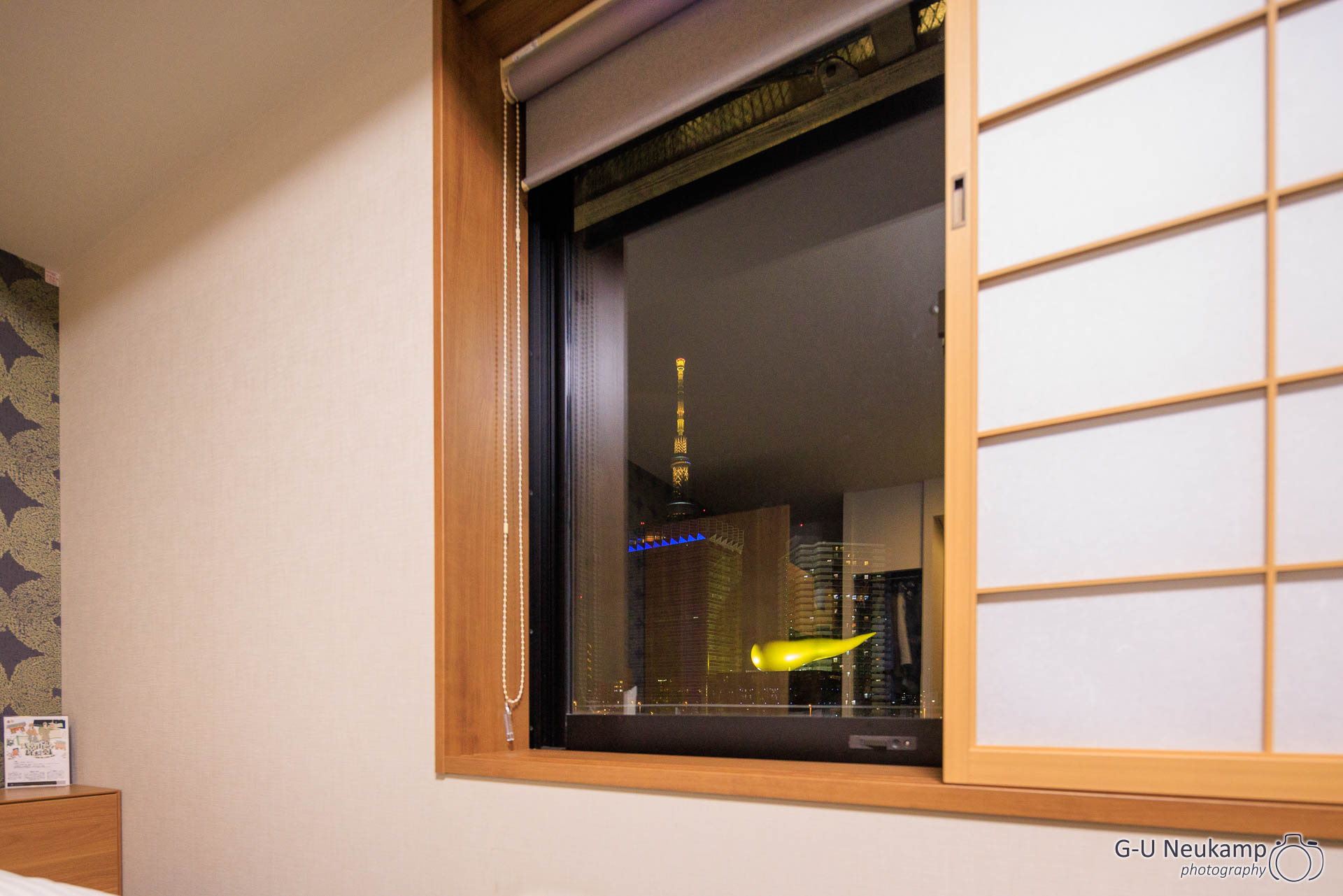
Around 8:30 p.m. local time, we finally arrived at our hotel room after a good 34-hour journey and were rewarded by a wonderful view of the Sumida River and the Tokyo SkyTree:
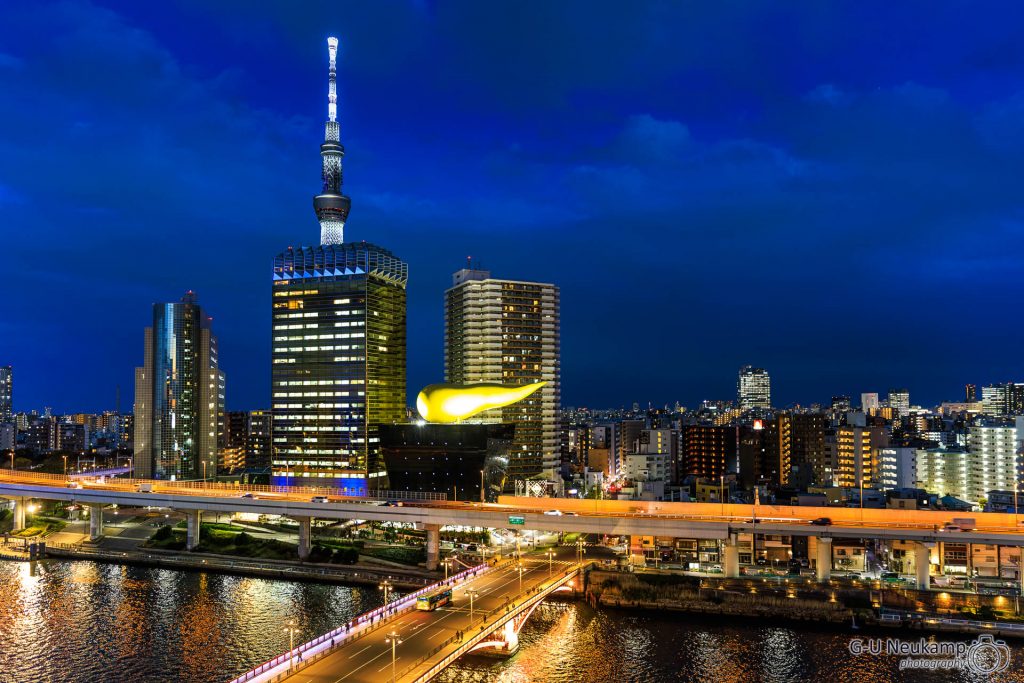
By the way, the building that obstructed our free view of the SkyTree belongs to the ASAHI brewery. The golden something on the outbuilding is supposed to represent beer foam.
Since it was already too late to go out for dinner, we picked up some bento boxes from the konbini located on the first floor of our hotel and enjoyed our first dinner in Japan all together in our hotel room. Konbinis in Japan are smaller grocery stores that are usually open 24 hours a day, 7 days a week. Thus refreshed, we took our first small excursion to Asakusa Shrine and Sensō-ji. Both were within walking distance of our hotel.
Asakusa Shrine (浅草神社, Asakusa-jinja) is a Shinto shrine. It is also known as Sanja-sama (Shrine of the Three Gods) and is one of the most famous Shinto shrines in the city. The shrine honors the three men who founded the Sensō-ji. The Asakusa Shrine is part of a larger collection of sacred buildings in the area. It is located on the east side of Sensō-ji on a street marked by a large stone torii.
It is one of only two buildings in the area which survived World War II and has been classified as an important cultural heritage site due to its long history.
The Sensō-ji (浅草寺), or Asakusa-dera when the characters are read differently, is a Buddhist temple. Its formal temple name is Kinryūzan (金龍山). It is Tokyo’s oldest and most important temple. The history of the temple goes back a long way. According to legend, in 628 three fishermen found a 5-cm golden Kannon statue in their net, which was then worshipped. In 645, the priest Shōkai built a temple on the present site.
The temple burned down in 1642, then during the Kantō earthquake and World War II, but has always been rebuilt, most recently in 1958 using reinforced concrete.
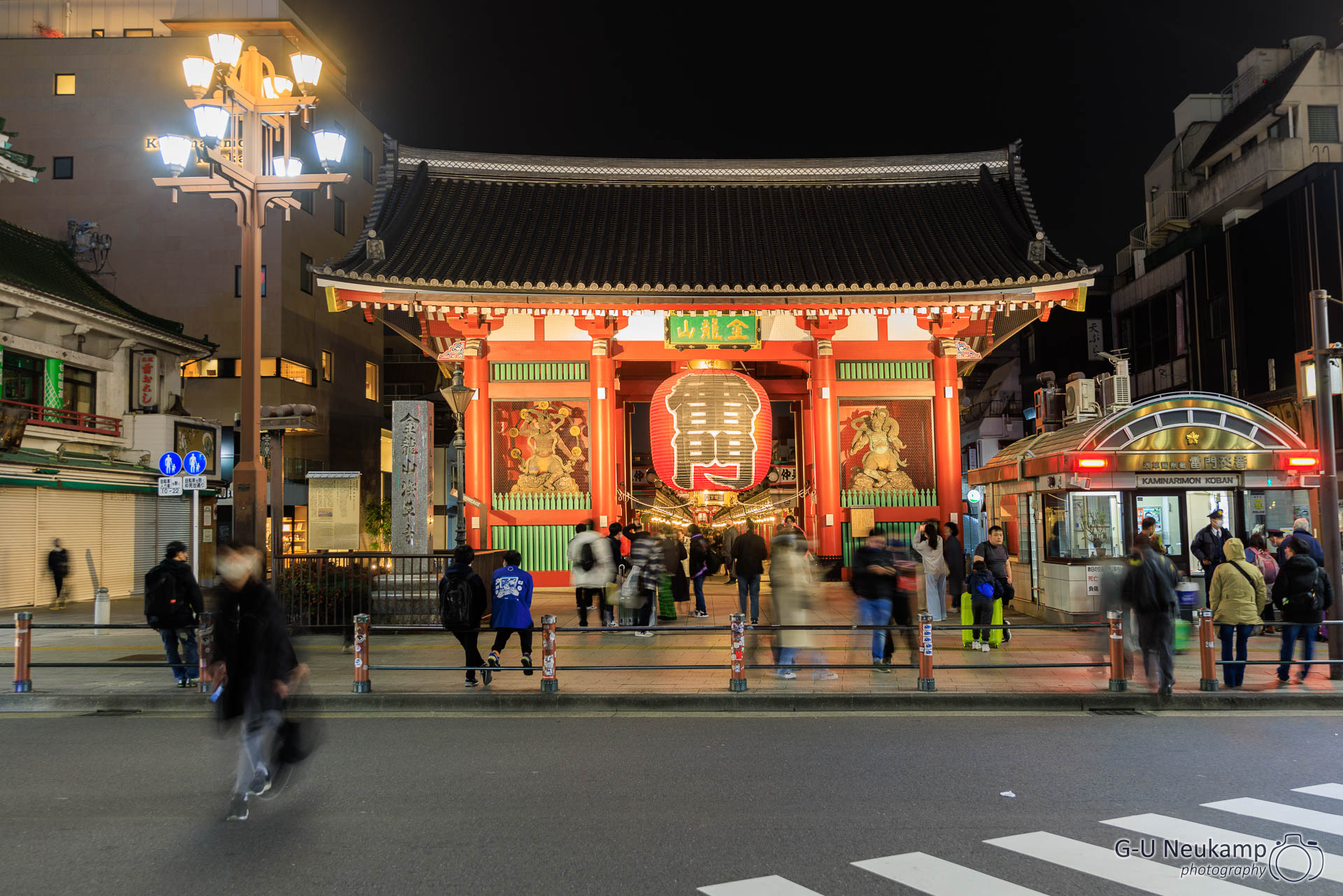
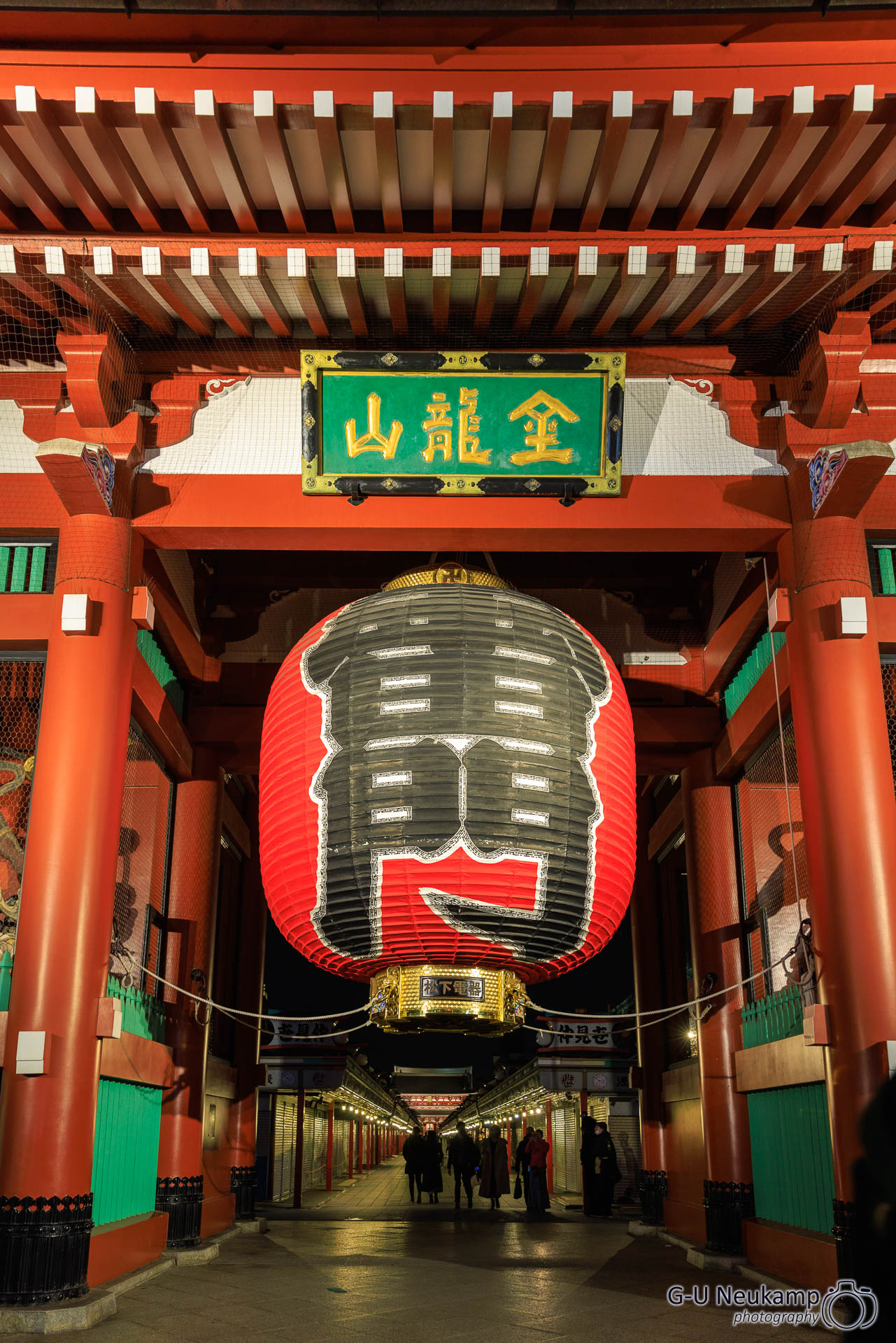
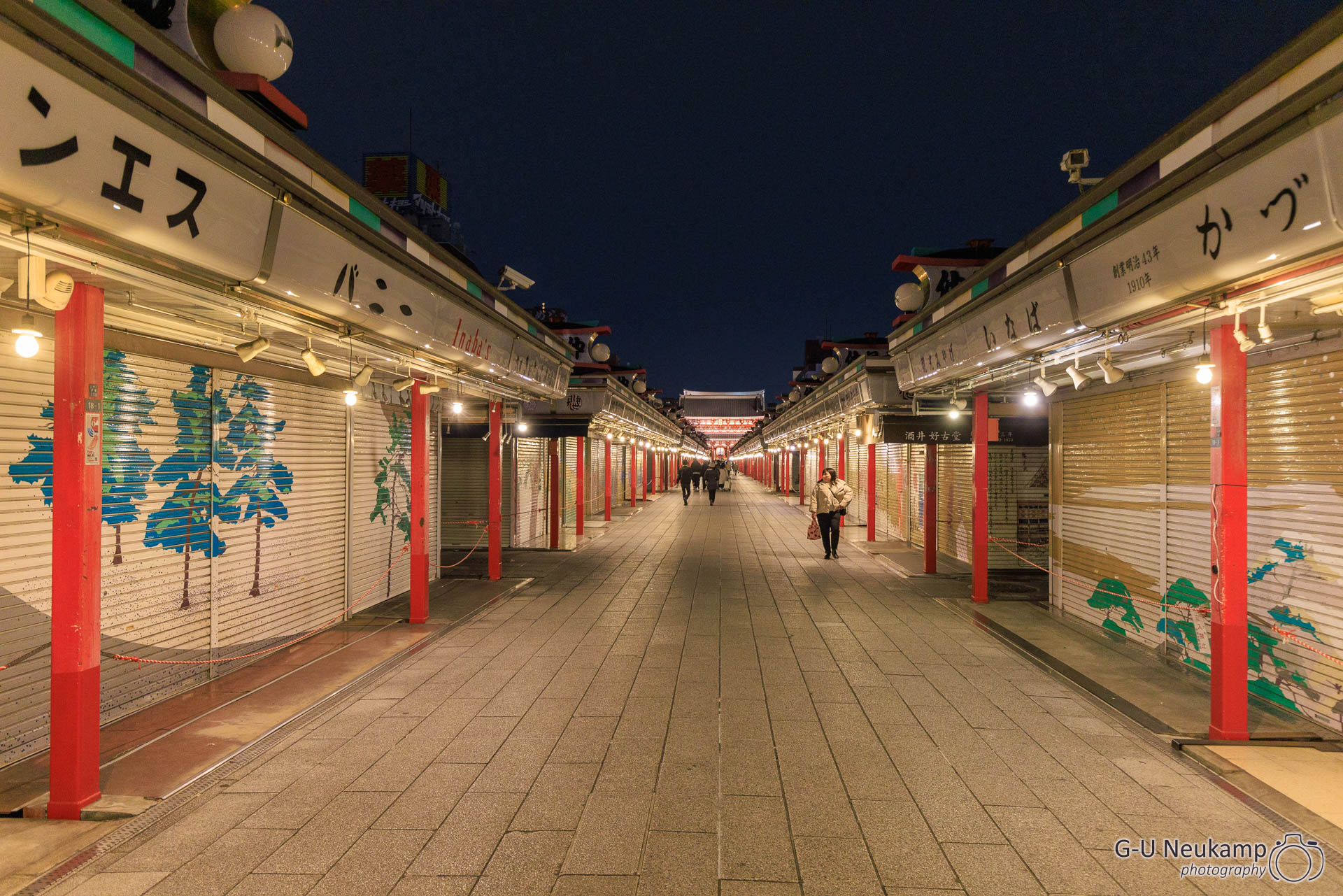
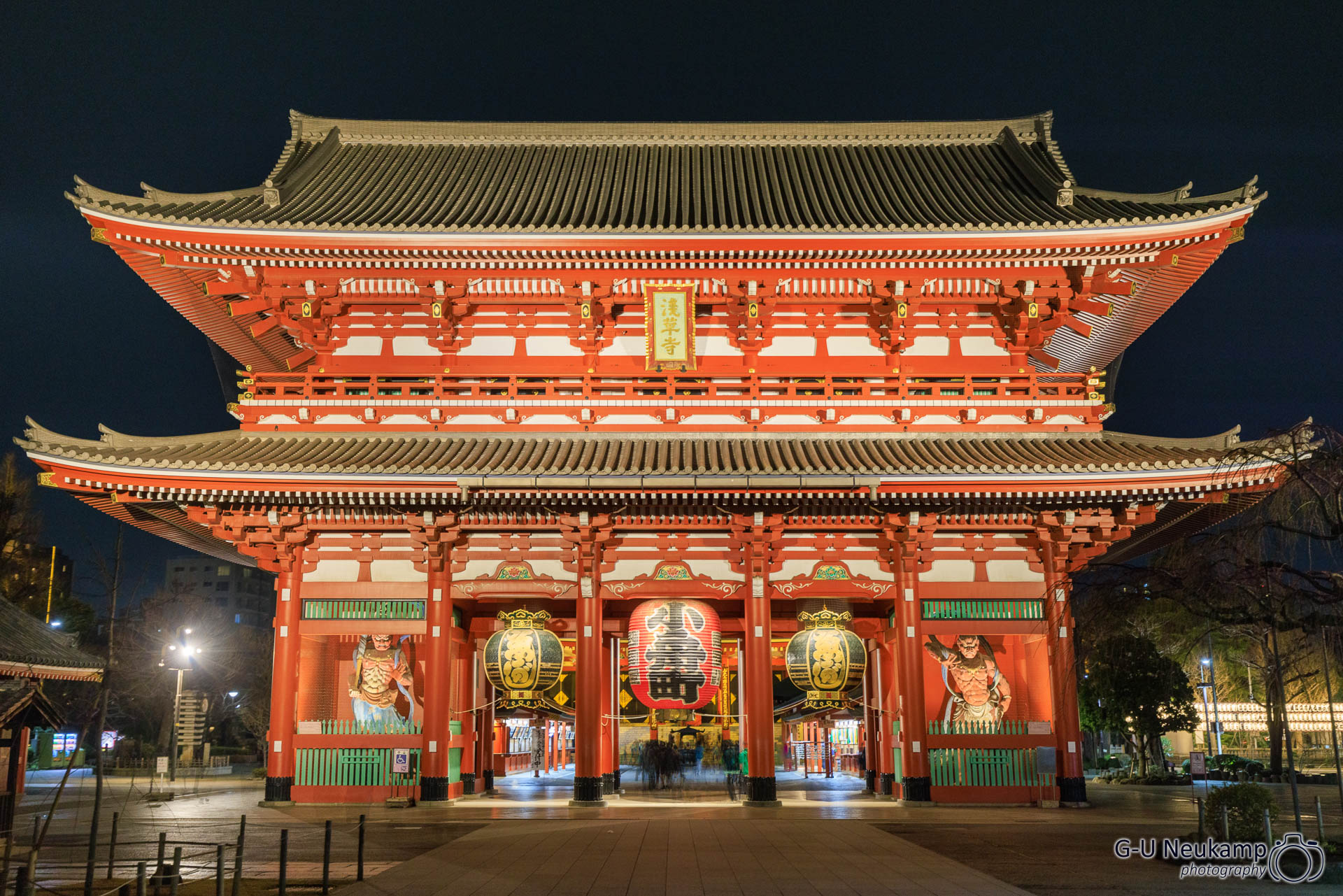
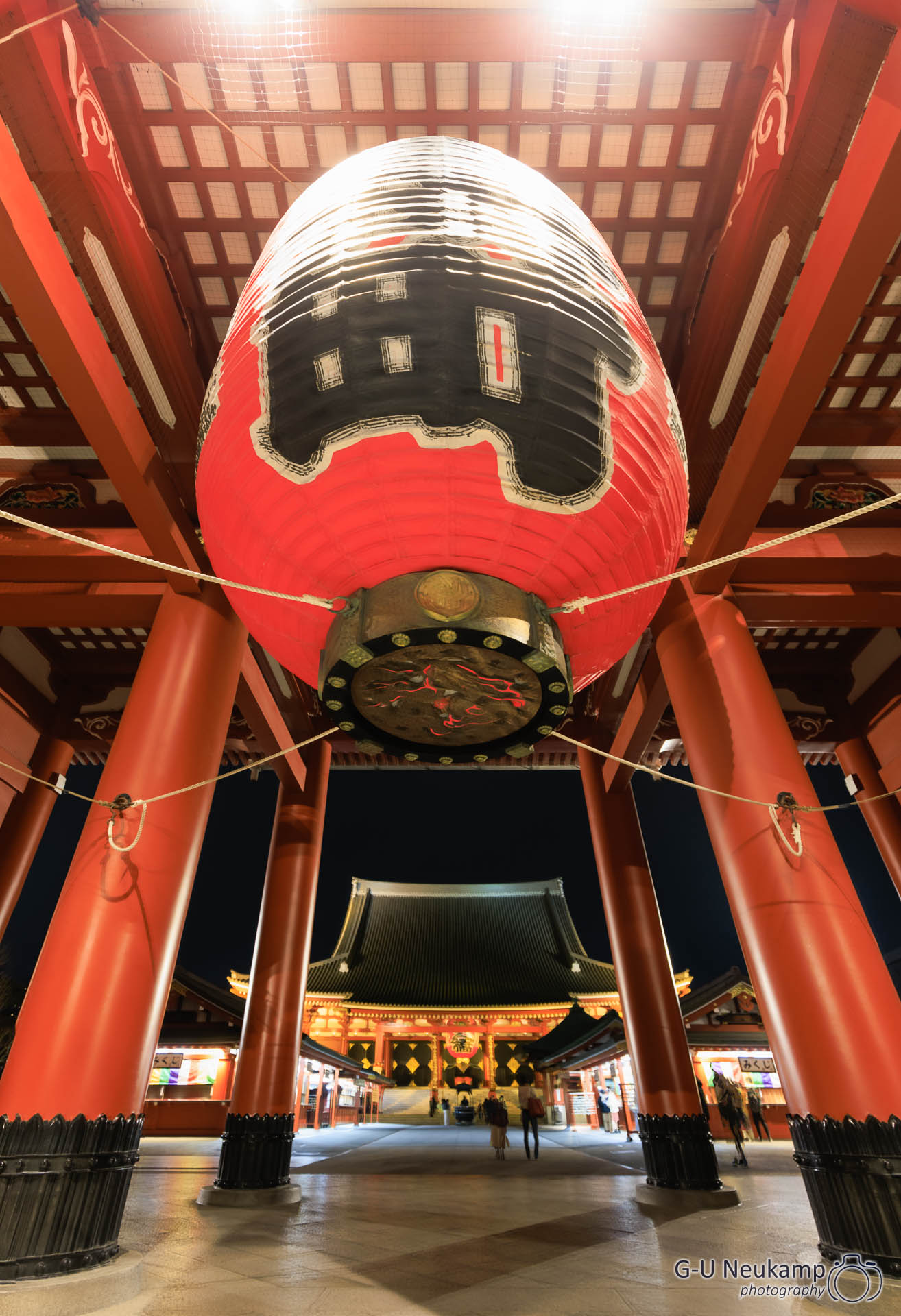
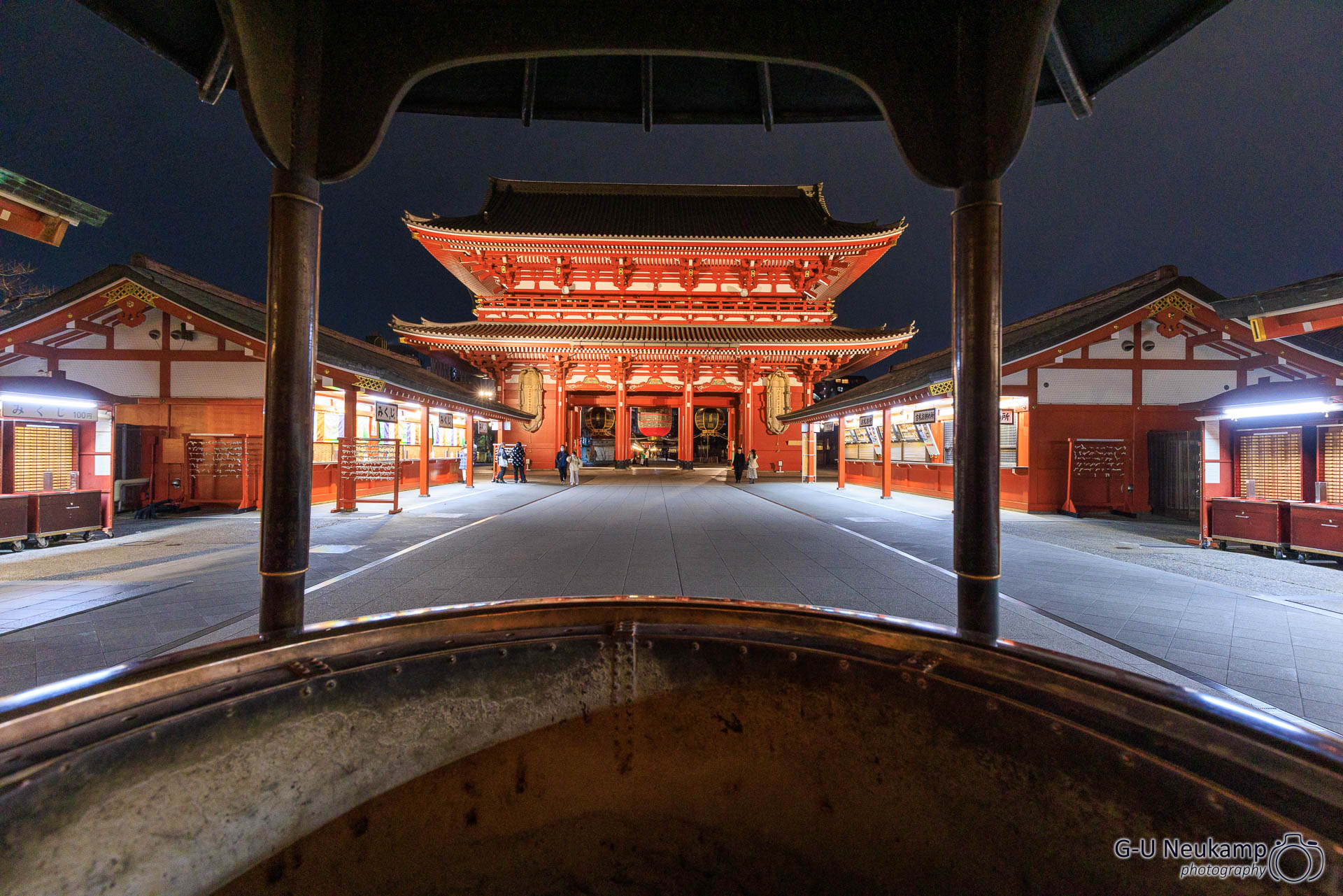
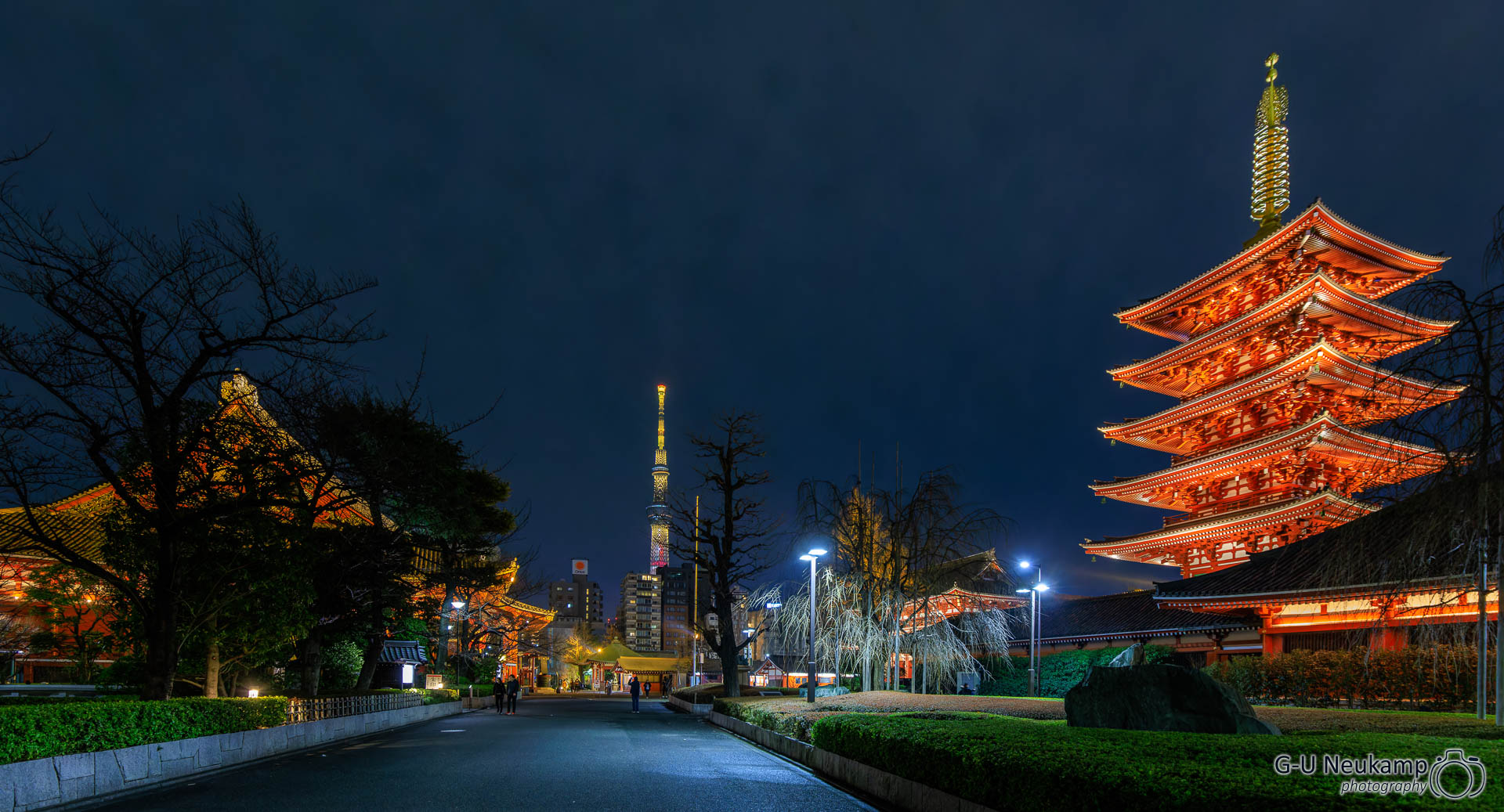
After the long journey, the walk and overwhelmed by the first impressions from Tokyo, we fell into our beds completely exhausted.
